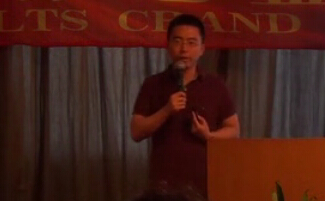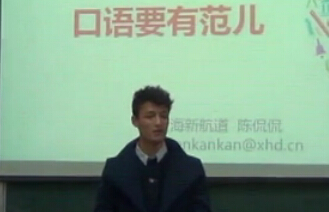雅思阅读材料之猫砂是谁发明的
2014-01-21 14:08 供稿单位: 新航道
出国英语考试有哪些 雅思6.5是什么水平 雅思阅读评分标准 托福阅读评分标准 雅思和托福的区别
In January of 1948, an enterprising young man named Ed Lowe, the heir apparent to his family's coal, ice, and sawdust supply company, gave the name "Kitty Litter" to a product manufactured by his family, known as Fuller's Earth.
The product consisted of kiln-dried clay, and its intended use was as a non-flammable, industrial absorbent. Ed aspired to expand his family's business by marketing the tiny nuggets of clay to chicken farmers as nesting material for their chickens, but failed in his attempts to do so.
At the same time, Kay Draper, of Cassopolis, Michigan, sought sand for her cats' litter box, as the pile she drew from had frozen solid in the cold, Midwest winter, and the ashes she used from her fireplace, out of sheer desperation, proved to create quite a mess. The sawdust she tried, though much tidier, did not work much better.
A frazzled Kay opted to visit the Lowe factory, in hopes of obtaining some sand, where she encountered the eager and youthful Ed Lowe. Sensing an opening, Ed gave his pest sales pitch on the merits of using Fuller's Earth as an absorbent for cat waste instead of using sand. Kay bit, loved the product, gave Ed free word-of-mouth advertising, and came back for more. She also sent Ed a faithful following of feline owners requesting Fuller's Earth for their cats.
Ed took the initiative, packaged the dried clay in ten 5-pound paper bags, which he labeled "Kitty Litter." Even at the bargain basement price of $0.65 per bag, Ed could not sell his bags, so he decided to give them away for free to a local pet shop. The shop owner's customers so liked their free samples of Kitty Litter that they were willing to open their change purses to pay for it.
Enterprising Ed took his feline phenomenon on the road, targeting pet shops and cat shows in hopes of promoting his pet project. Eventually, the seed that he planted in Cassopolis, Michigan took root, and Kitty Litter sparked a feline frenzy. Sales boomed, and a private investment group by the name of Golden Cat made Ed an offer he could not refuse…$200 million dollars plus stock options. Naturally, Ed accepted the offer, retired, and generously established a foundation bearing his name to help other entrepreneurs achieve the same fame and fortune he did with his granules of clay.
Ed died in 1995, leaving behind a legacy of cat litter that dominates the market at 55%, and sparking an industry of cat foods, toys, and other paraphernalia catering to the cat lover. His persistence, ingenuity, and flexibility should serve as a lesson to all that even nuggets of clay can be transformed into nuggets of gold with perseverance, patience, and a positive attitude.
sawdust: 锯屑
nugget: 小块
word-of-mouth: 口头的
paraphernalia: 随身用具
以上就是新航道雅思频道为大家整理的雅思阅读材料之猫砂是谁发明的,希望对大家有帮助,更多资讯、资料请访问新航道雅思阅读频道 https://www.xhd.cn/ielts/yuedu/
- 上一篇:雅思阅读材料之为什么身体关节会咔咔响
- 下一篇:雅思阅读材料之为什么会起静电
分享到:

- 新航道,英语成功之道。时间获取新航道英语学习资料和新鲜资讯,请在微信公众账号中搜索「新航道英语」或者「xhdenglish」,或用手机扫描左方二维码,即可获得新航道每日精华内容推送和英语学习经验分享,并参与新航道举办的各项活动。
责编:李术
精彩专题
更多视频荟萃
更多
-
新航道姚骏鹏-雅思阅读高分攻略
时长:03-06

-
新航道陈侃侃-雅思口语要有范儿
时长:03-06

-
【3分钟学雅思】王大锤告诉你为啥药不能停
时长:01-12

-
【3分钟学雅思】全世界个感官餐厅
时长:01-12
热门文章
更多
-
8月31日雅思广州考机考初体验
选择机考模式的考生将通过机考模式参加听...








